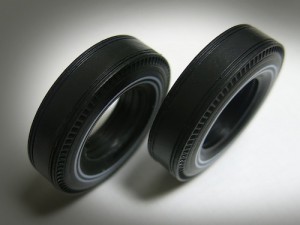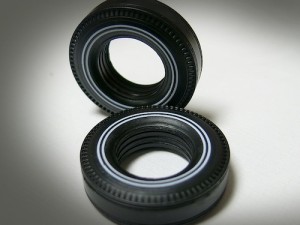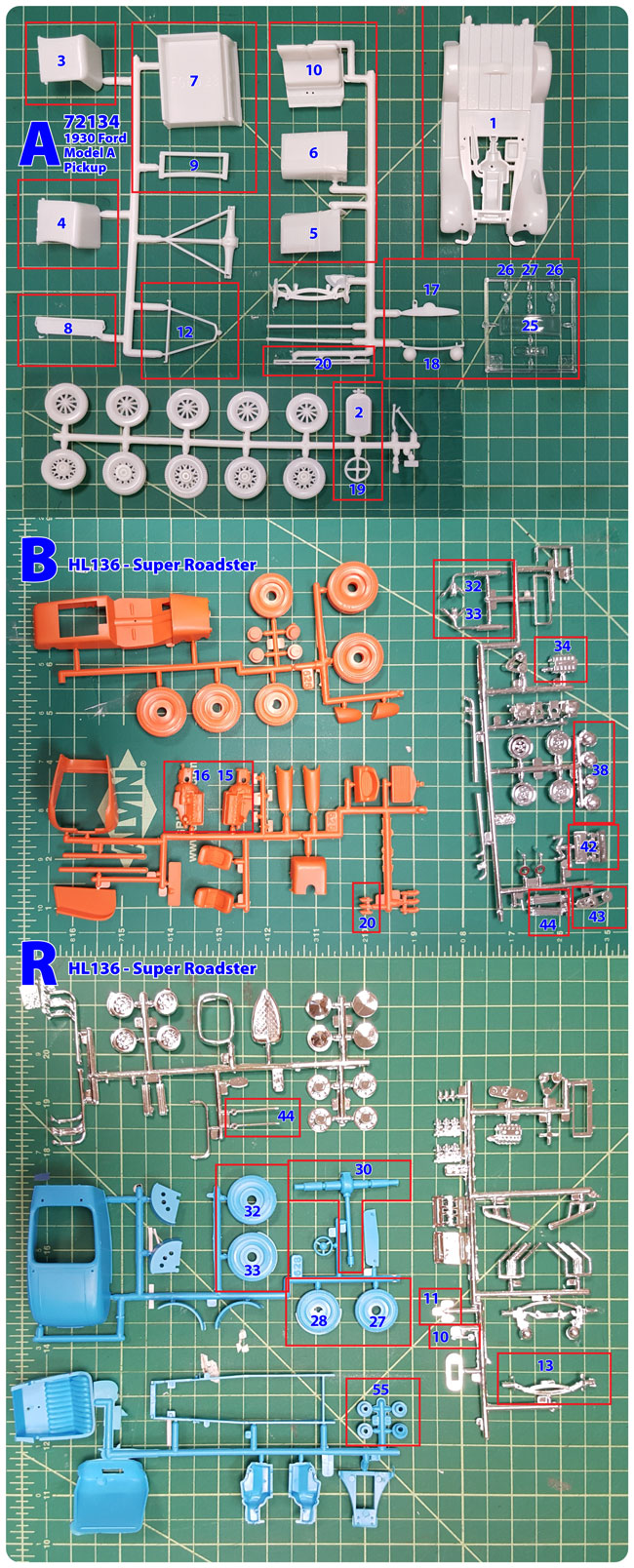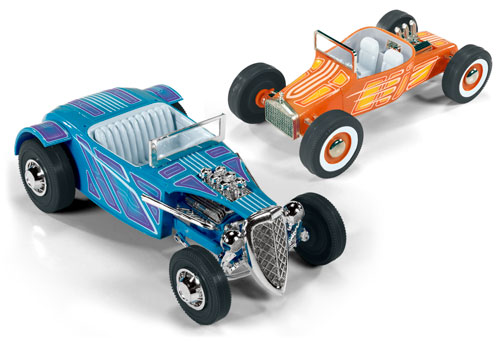

Archive for the ‘Hot Rods Rat Rods’ Category
KAT Chat: Original Art ’59 El Camino
I’m a lucky guy. I happen to own the original vintage AMT painting for one of my all-time favorite kits. Specifically, the 1970s “Street Rods” issue of the 1959 Chevrolet El Camino. Now, I can hear some of you commenting about this issue of the kit, having changes and fewer parts than prior issues. But, if you’re like me, specific kits from certain times in your childhood created special memories, and this is one of those kits for me!
Gather ’round the workbench for a cool story: I remember walking home after school with a buddy in the late 1970s. We were going over to his place to build model cars. He had an older brother who happened to have a body shop in town. He did amazing work and had access to some really cool paints! When we walked into the kitchen at my friend’s place, sitting on the table, there just happened to be an in-progress build of, you guessed it, the Street Rods ’59 El Camino! However, what I saw made my eyes bug out and stuck a memory in my mind that I’ll never forget. The body was painted with amazing rainbow metal flake and glittered like no model I’d never seen! It didn’t matter that the flake was a wee bit too big for a scale model car body. It inspired me to no end and is probably what started my love of “flaked” paint, whether on model cars or real cars!
The kit was barely started and was in the box. I just gawked at the beautiful illustration of the white car with the chrome scoop sticking out from the hood. The colorful orange and purple background really set the car off and I wished that kit with its wild flaked body was mine!
Now fast forward, oh, about 30 or 35 years. During my mad collecting years, I had found a very nice factory sealed example of the kit, but when the opportunity arose to acquire the actual original painting, the world stopped spinning for a moment. Needless to say, the day I saw it in person for the first time was quite a thrill! Here is a scan of the full painting, for your enjoyment!
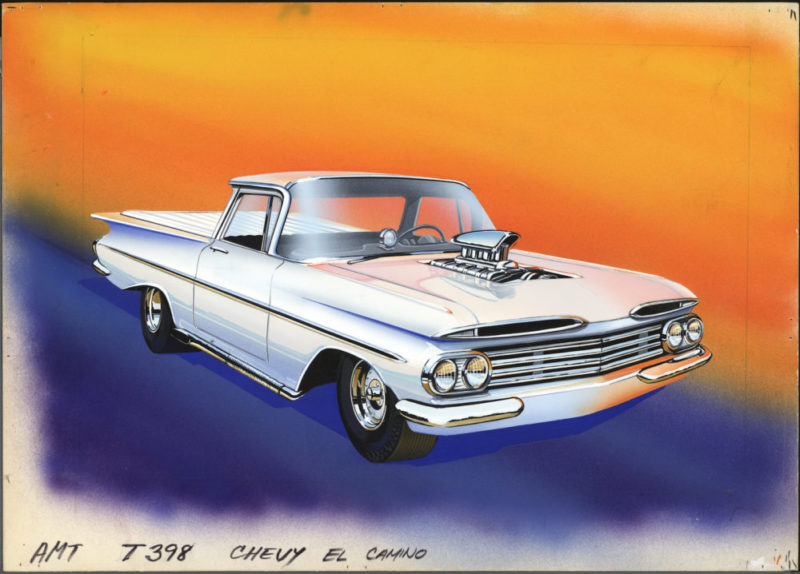
I would have loved to have been sitting by the artist’s desk when this gorgeous rendering was created! But, I can tell you it was a total blast to be the one who laid out all the artwork for the Original Art Series reissue!
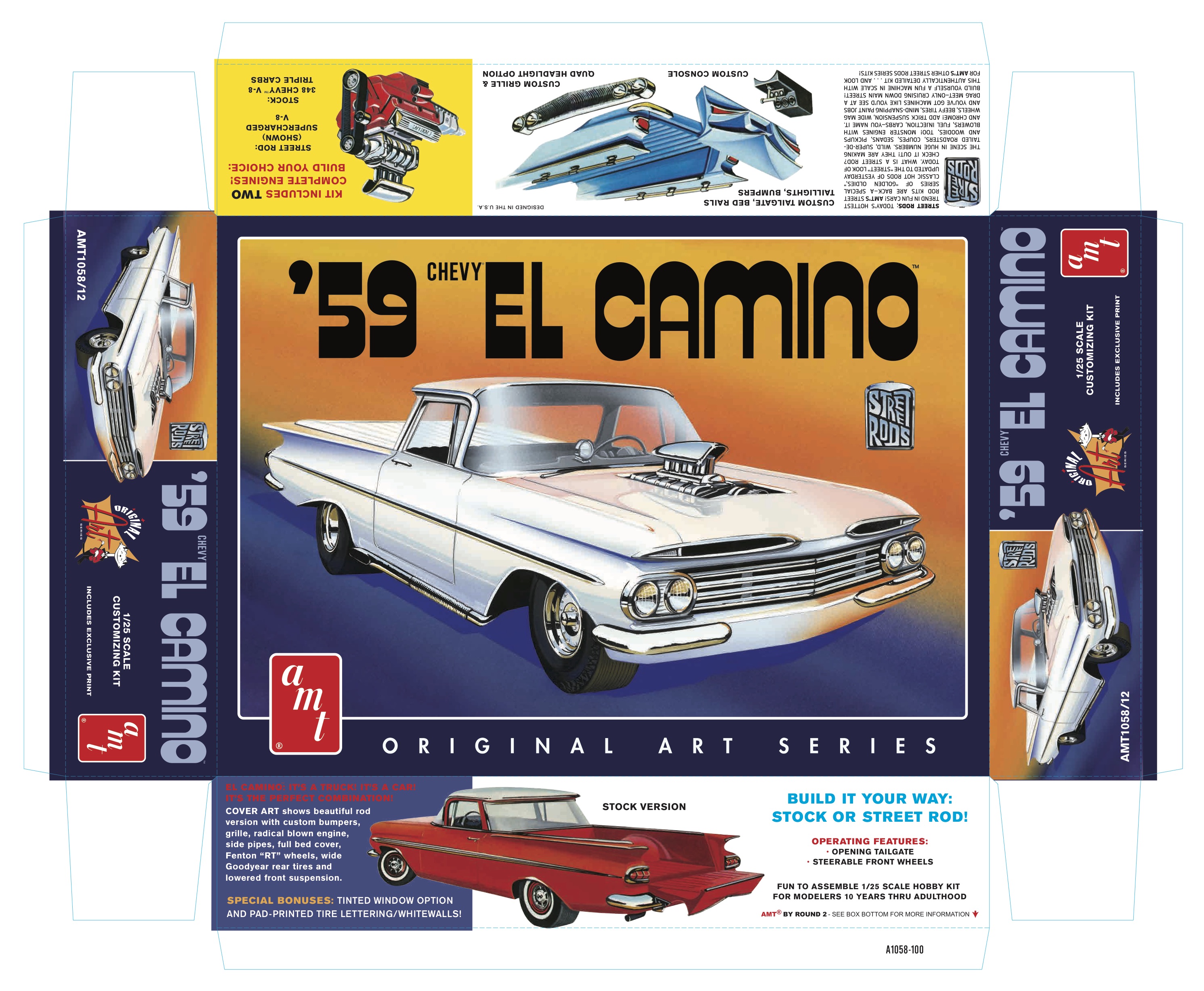
For the decal sheet, I honored my friend and his brother with some special decals related to the types of work they do today. It’s much different and much more fun than the one which came in the Street Rods series kit all those years ago. Check it out for yourself! And of course, inside the Original Art Series reissue, you’ll find a sweet bonus print of the original painting.
Grab the glue, it’s all for YOU!
Happy modeling!
JG
Lindberg Model Kits: Mini Lindy’s: An Illustrated History 1970s
This is part 2 of an illustrated history of the Lindberg’s Mini Lindy line based on found images, catalogs and info from some modeling sites.
In 1970 the existing kits from the 60s were rereleased with new packaging and item numbers; 8 under the name 1971 Hot Shot and 8 under the name Mod Rod which included psychedelic flower decals. Other Mod Rod versions of previous cars were made available though a mail-in promotion; they came in plain boxes but included Mod Rod decals and instructions. These included the Porsche Carrera, the “1971” Corvette, the Ford Mustang, the Jaguar XKE and probably more.

In 1971 8 of the original trucks were rereleased under the name Big Wheels. That same year seven new cars were released under the name 1972 Super Sport. The ’68 corvette was included to round off the 8. New cars included the Cadillac Eldorado, Lincoln Continental Mark III, Chevrolet Vega, Buick Riviera, Gremlin, Monte Carlo and Pontiac Grand Prix (in catalog as Grand Ville). The Super Stock series are some of the more difficult to find Mini Lindy kits. One interesting thing to note is that the Pickup Camper was a Ford now it is a Chevy. The box art is the same as the 1960s but has been altered slightly. I believed the pickup was altered for a dealer promotion, because the Camper can be found in pink & orange striped Chevy promo boxes. The chrome grilles look different but the bodies are similar enough that the tool may have just been altered. It still has the number 22 on the underside of the body.

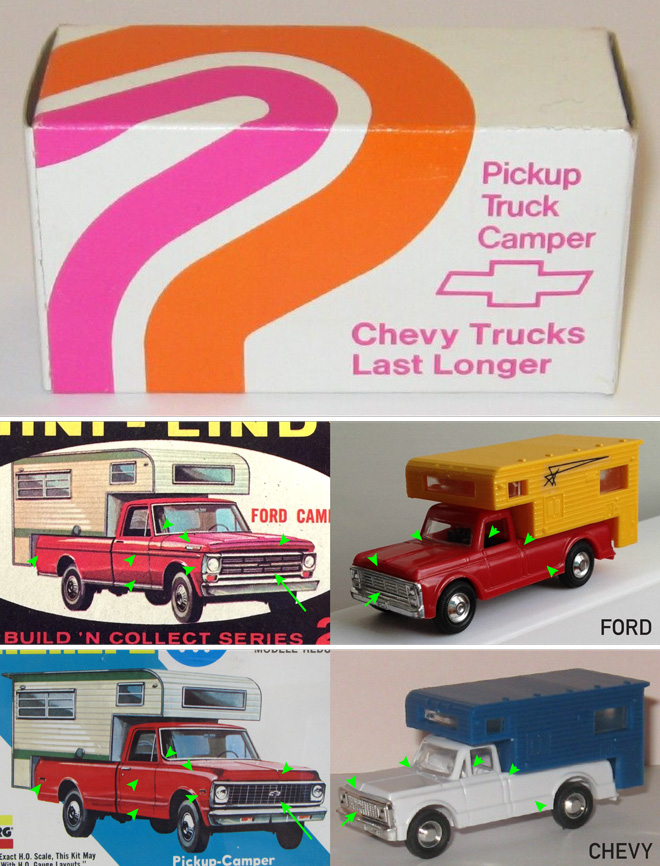
In 1972 some of the trucks were released in 2-packs.
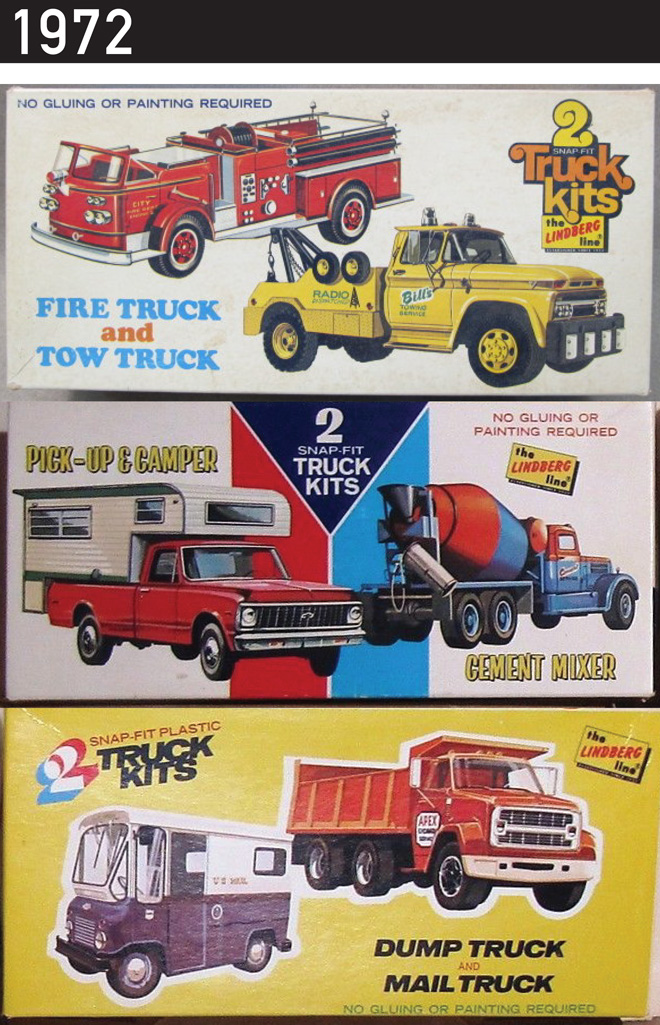
In 1975 10 trucks, vans and bus were released under the Hi Rollers series. The back of the packaging showed all the releases except for the 2 buses.
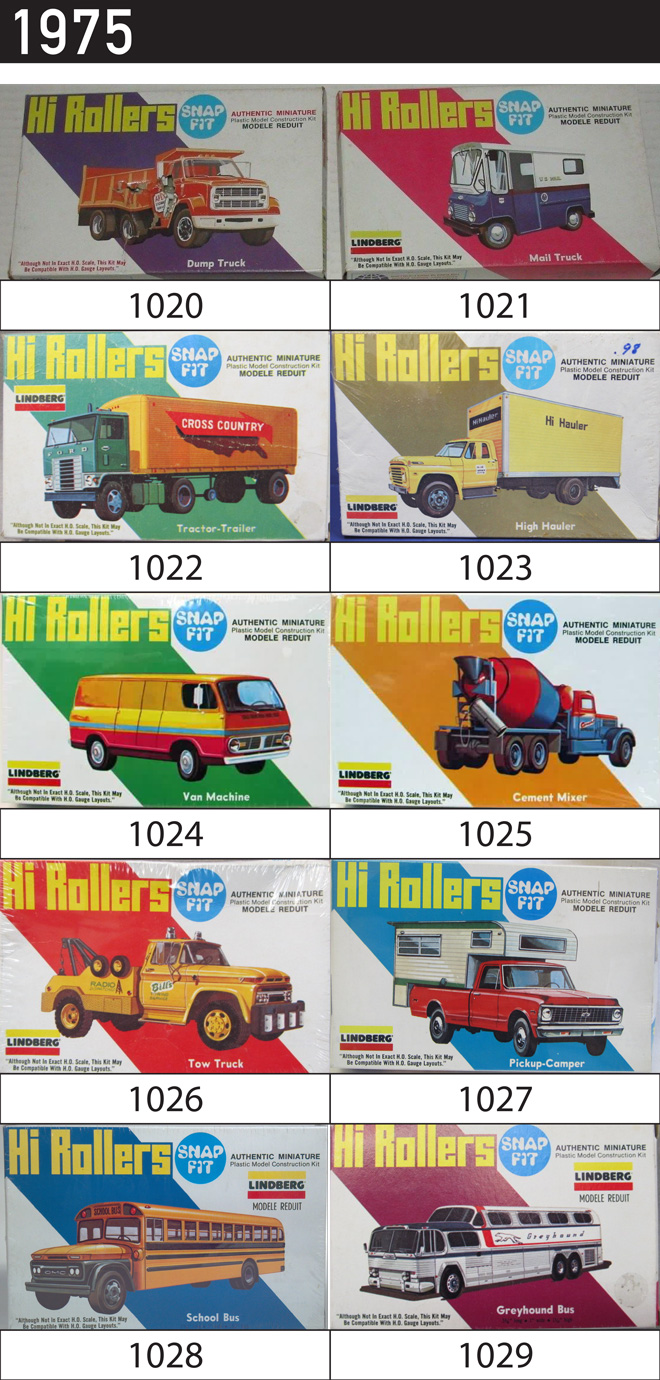
In 1976 8 cars were rereleased in the Speedy Wheels series.
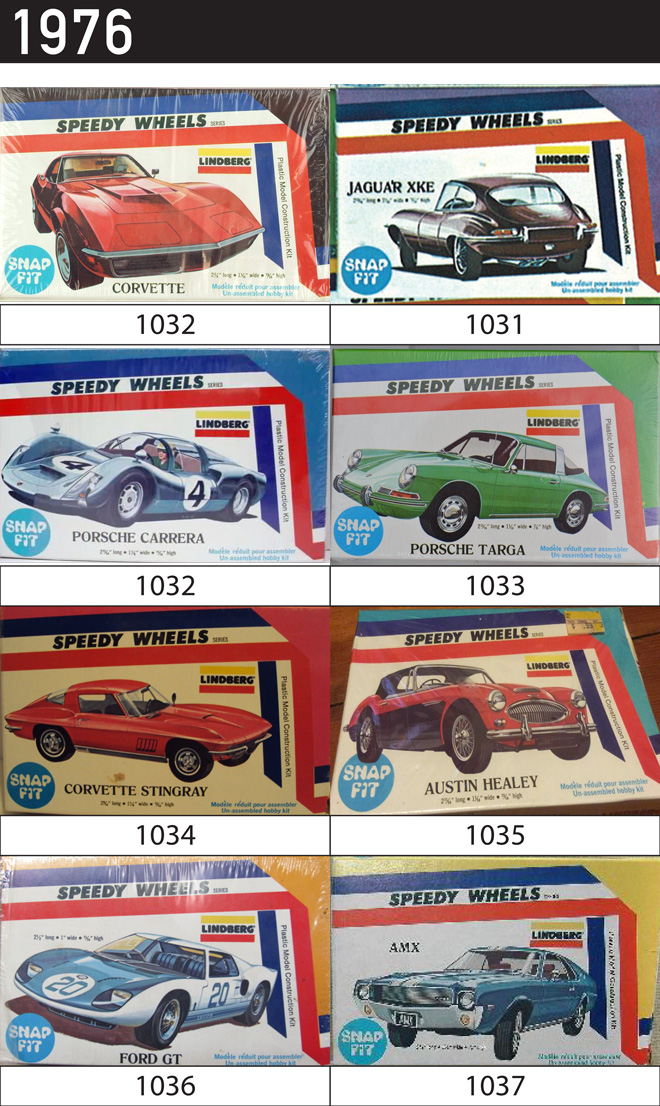
In 1977 the Van Go series added a new twist to 8 previous cars with bold graphics and glitter in the injection plastic.
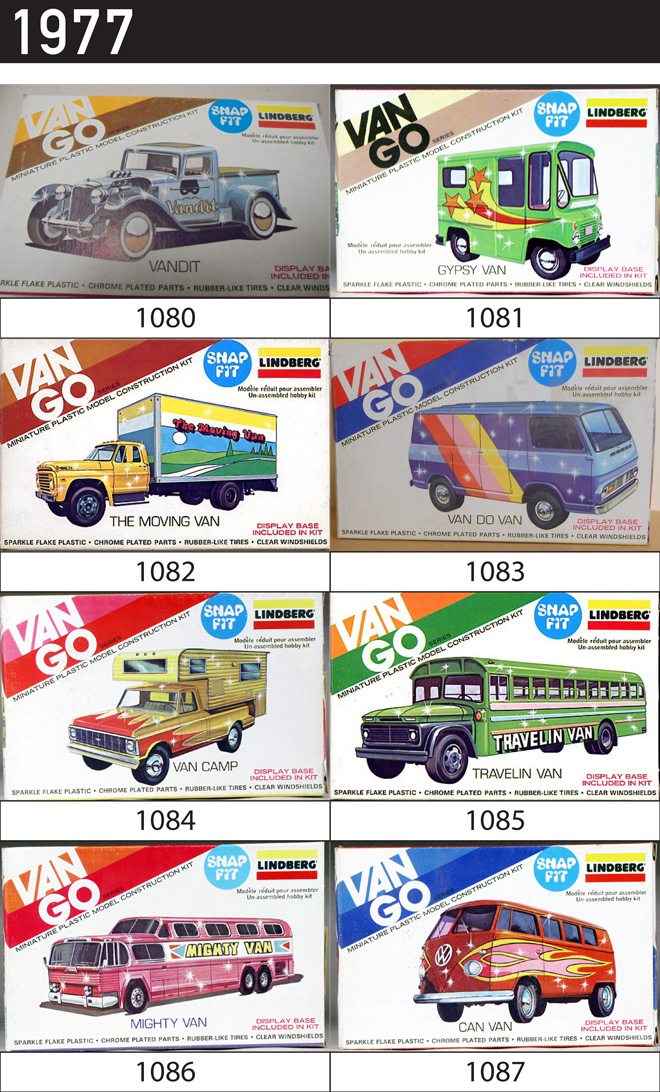
In 1979 the Car and Garage Kit series include a plastic garage with windows and an opening garage door. The Cadillac Eldorado and Lincoln Continental Mark III returned for the first and last time.
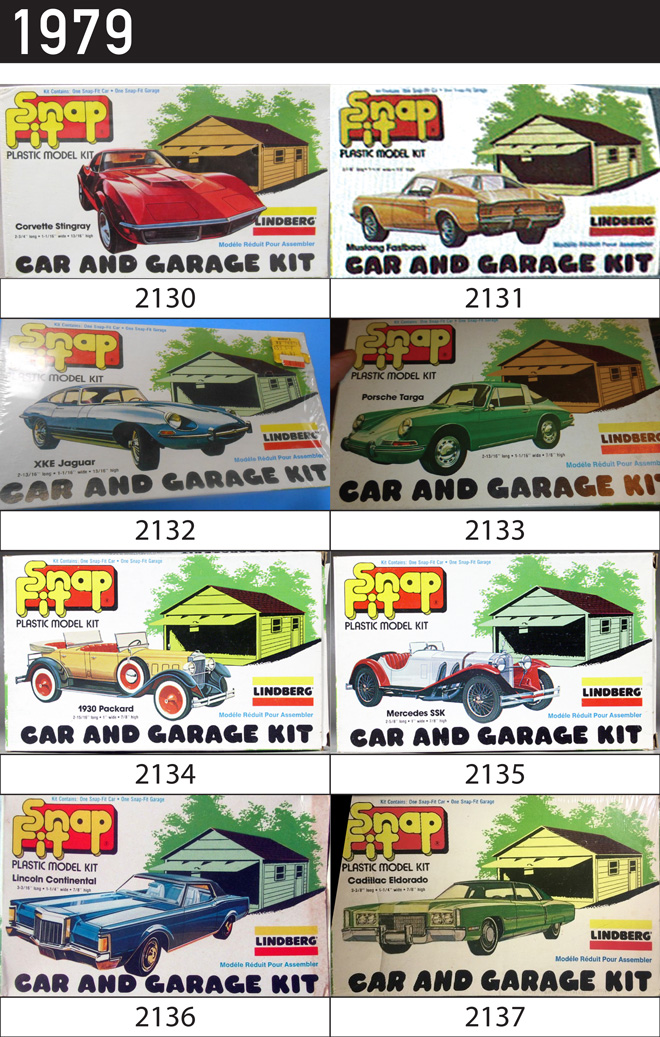
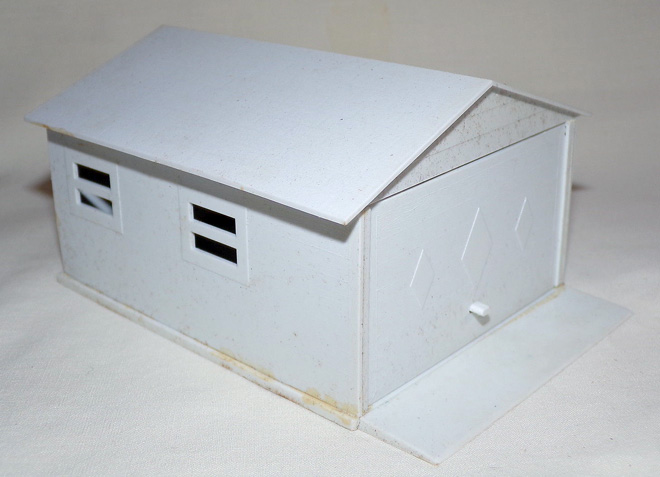
Look for my next post for part 3 – the 80s & 90s.
Some of the dates and images were found on these fantastic sites….
1:32 Kitbash: 1930 Ford Model A Roadster Pickup – Part 3

This is the final part of my 1930 Ford Model A Roaster Pickup kitbash using the Lindberg 1:32 Customizable Show Rod 2-pack and Lindberg 1:32 1930 Ford Model A Pickup.
Parts are painted, now it is time for assembly.
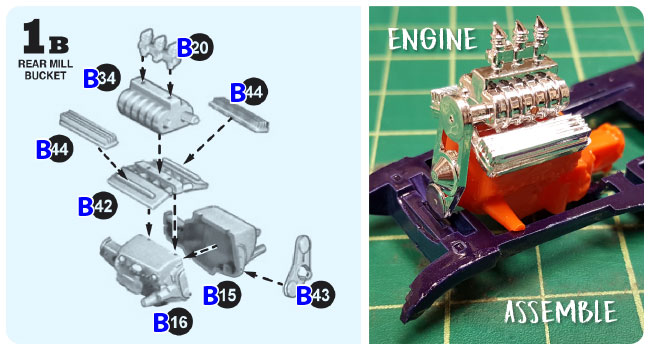
As mentioned in part 2, I assembled the motor using the “Rear Mill Bucket” instructions. As shown above.
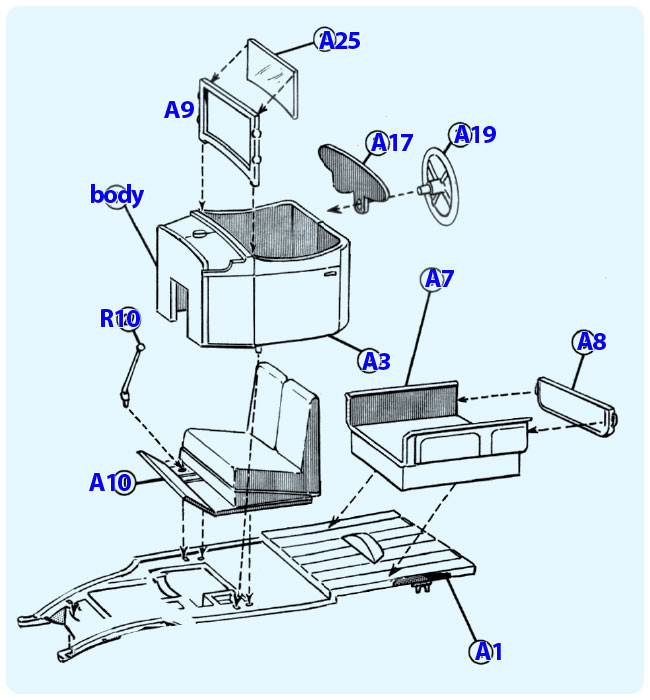
Next I assembled the frame (A1), body (A3+A4+A5+A6), dash (A17), steering wheel (A19), windshield (a9), glass (A25), bed (A7a), grille (A2), tail gate (A8), and interior of the cab (A10) as shown in the Model A Pickup instructions. I replaced the gear shift with the chromed one from the Super Roadster (part R10).
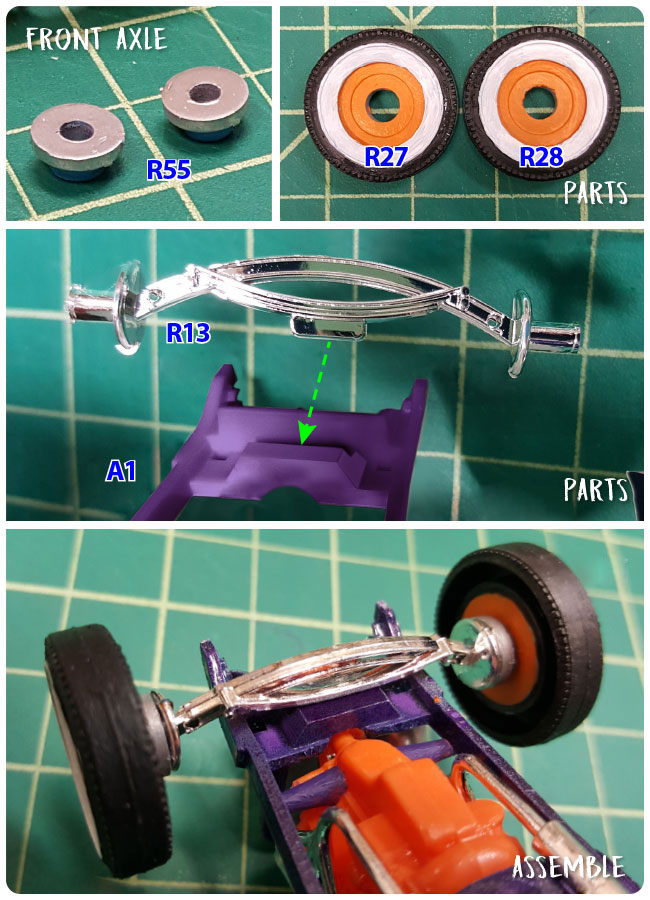
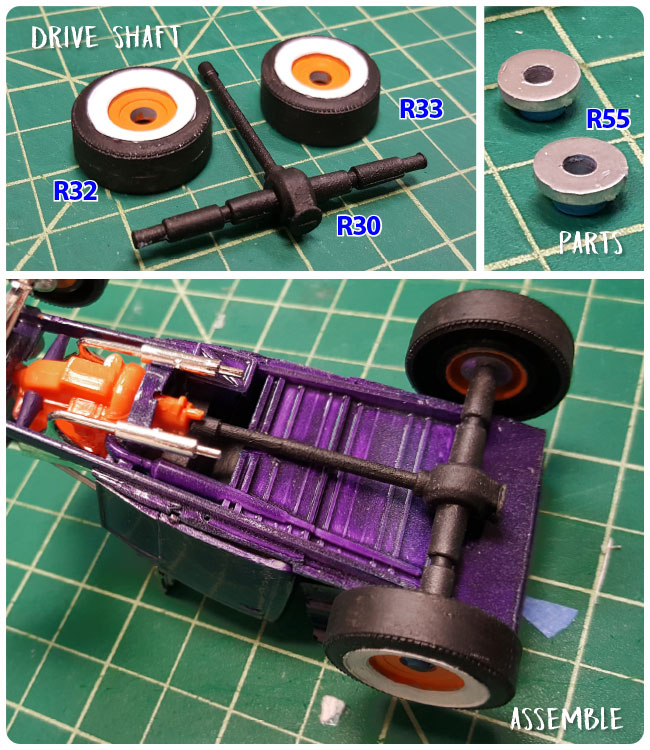
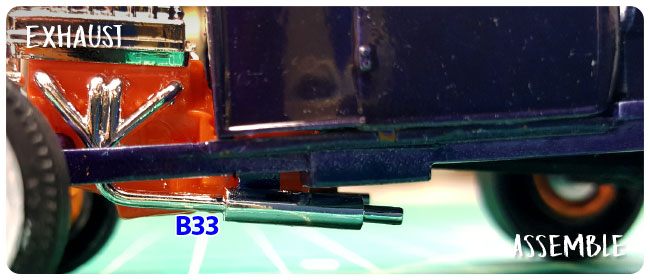
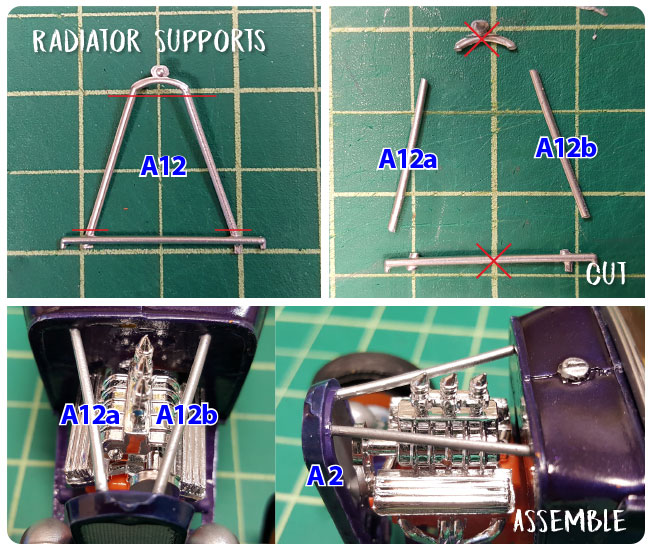
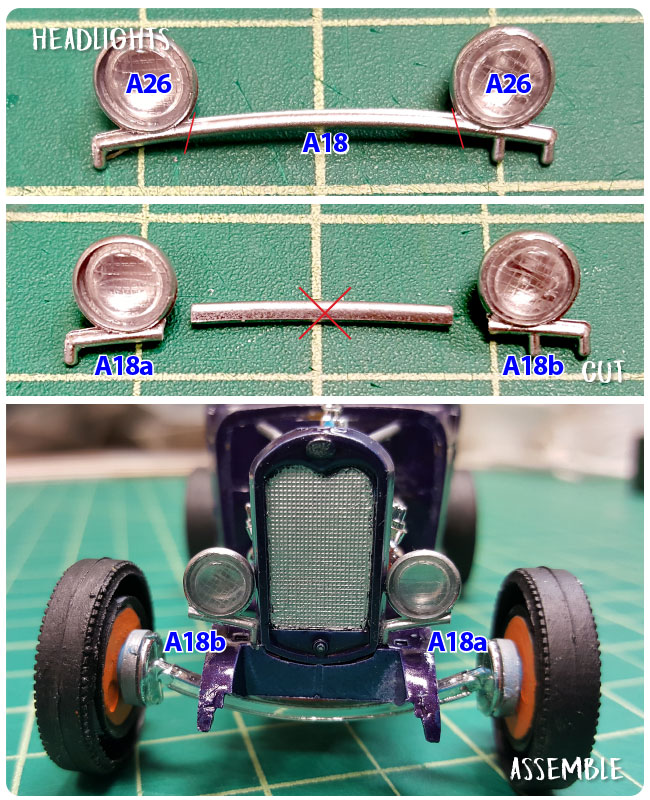
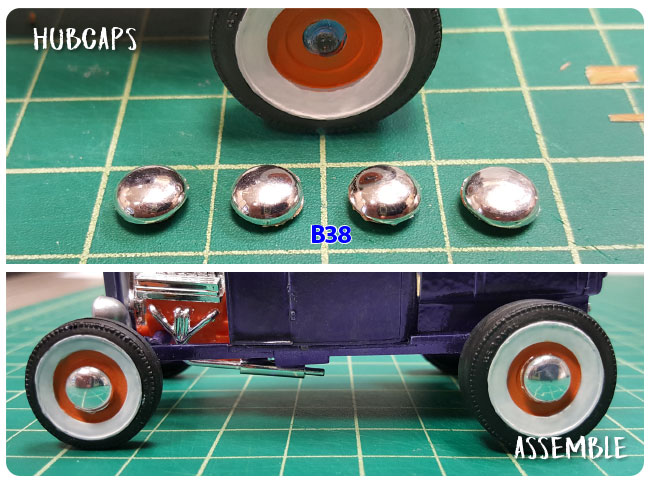
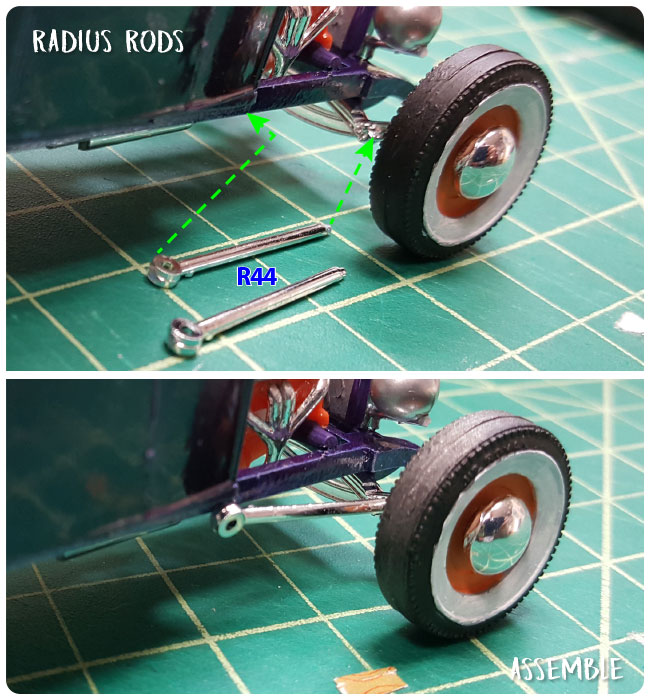
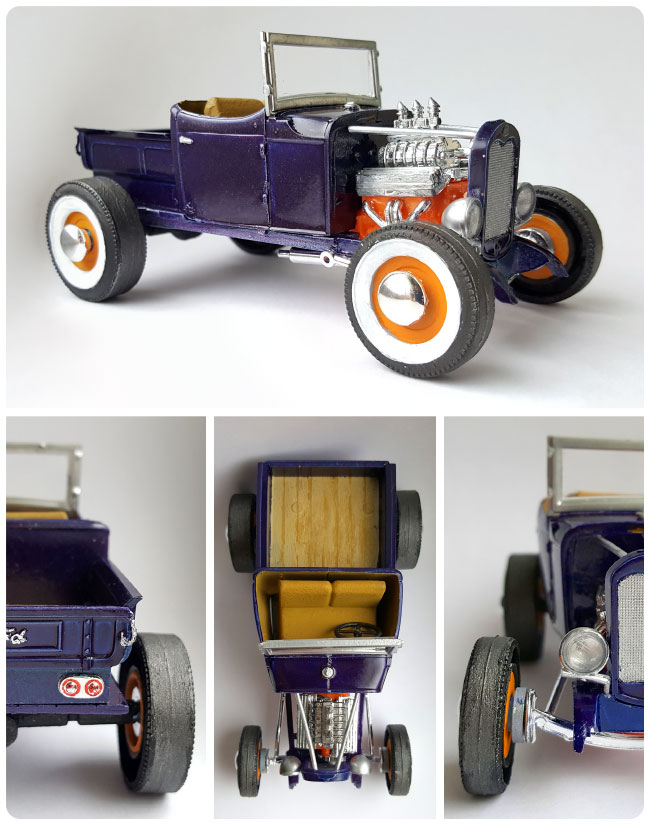
1:32 Kitbash: 1930 Ford Model A Roadster Pickup – Part 2
Goto PART 1
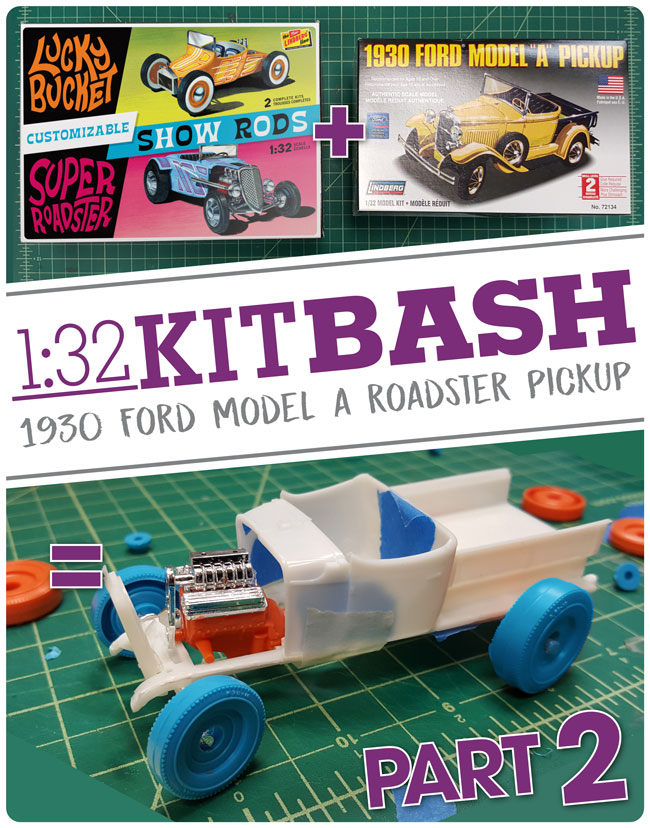
This is part 2 of my 1930 Ford Model A Roaster Pickup kitbash using the Lindberg 1:32 Customizable Show Rod 2-pack and Lindberg 1:32 1930 Ford Model A Pickup.
Above are the parts from each kit that were used. Note that I will reference 1930 Ford Model A Pickup kit part with an “A” in front of the part number, “B” for the Lucky Bucket and “R” for the Super Roadster.
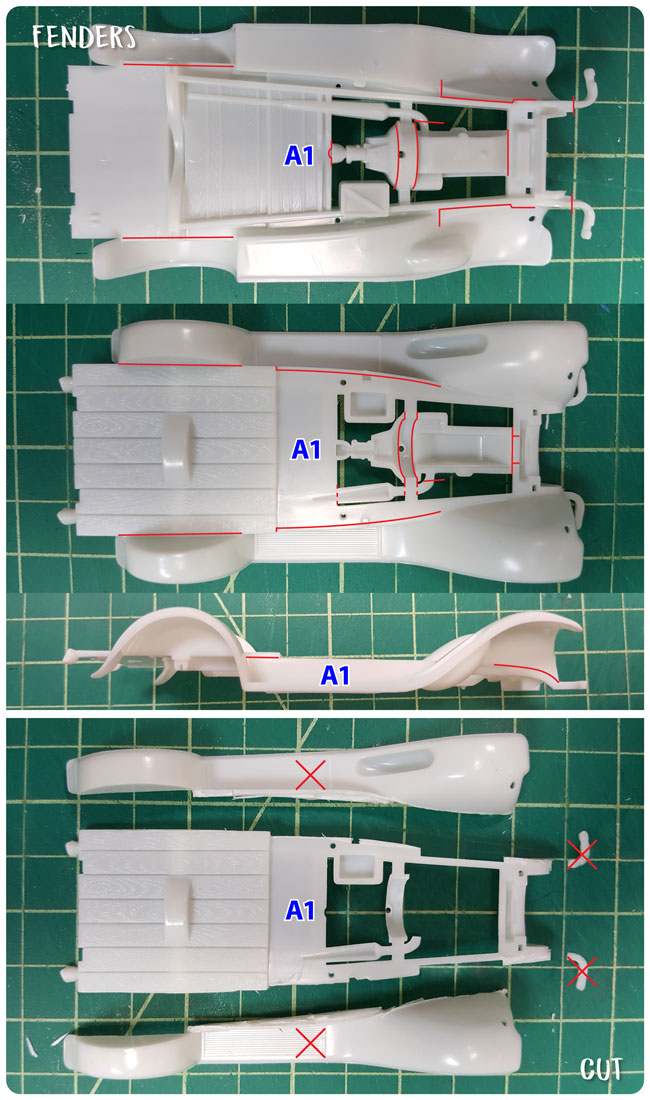
First I removed the fenders from the frame (A1). Cutting along the the red lines as shown above. I discarded the fenders (i.e. set them aside for future projects).
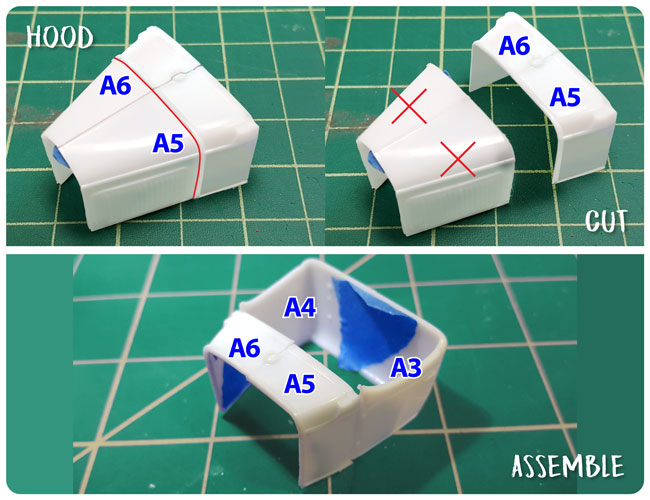
Next I separated the hood from the cowl halves (A5,A6), cutting along the red line. The hood halves were not used on this build, so discard. The cowl halves (A5,A6) and the body sides (A3,A4) were then glued together.
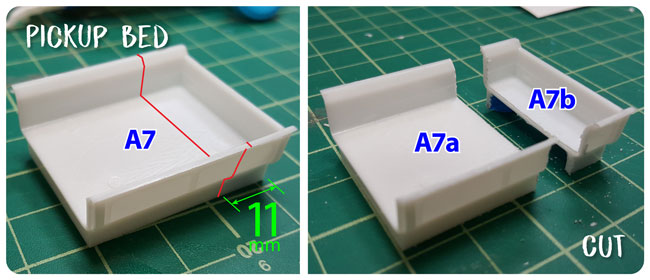
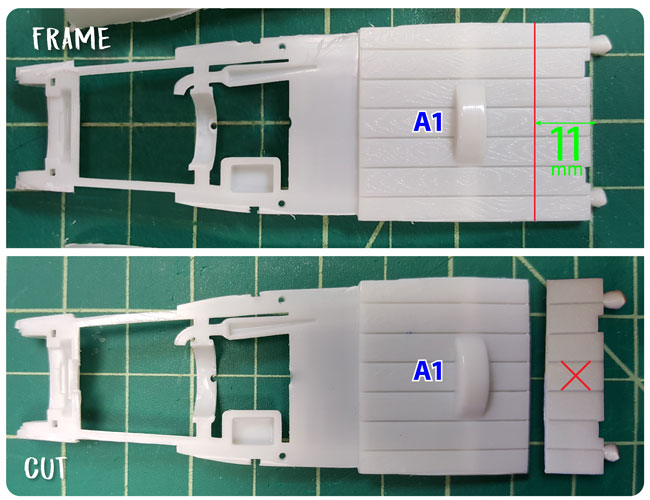
I wanted to shorten the pickup bed (A7). The excess is be used in next step, so you would need to remove at least 7mm, I went with 11mm. I will refer to the halves now as parts A7a and A7b. I also trimmed 11mm off the bed on frame (A1). The excess from A1 is discarded.
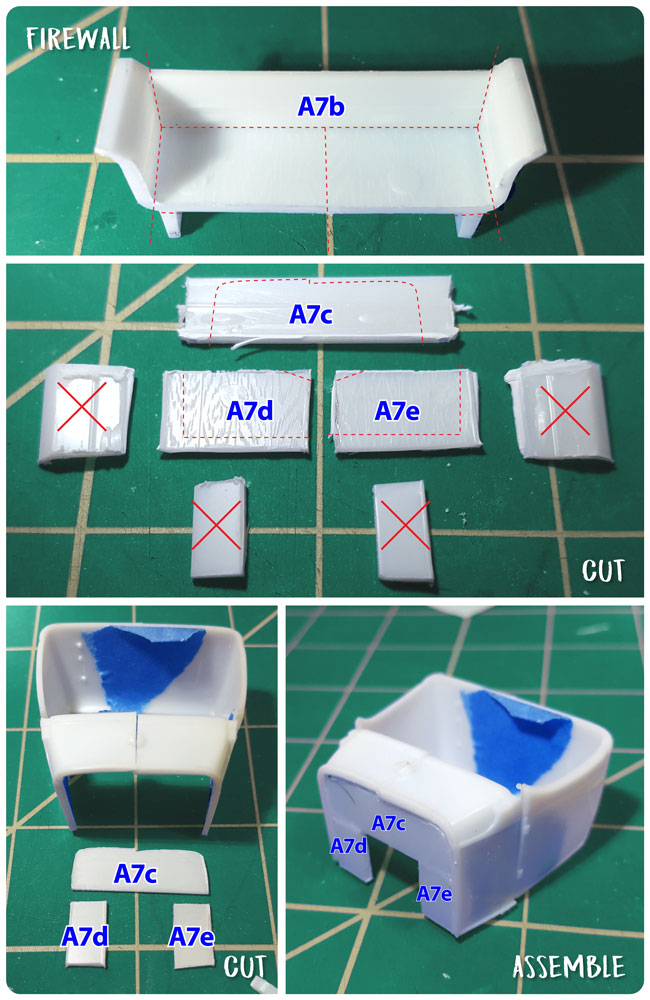
The body (A3+A4+A5+A6) is missing a firewall so I used part A7b to create it. I cut it into the pieces shown above and then cut 3 pieces down to fit in the cowl (A5+A6). The pieces were about 7mm wide and A7c was cut to fit the curve of the cowl. Parts A7c, A7d and A7e were glued to the body.
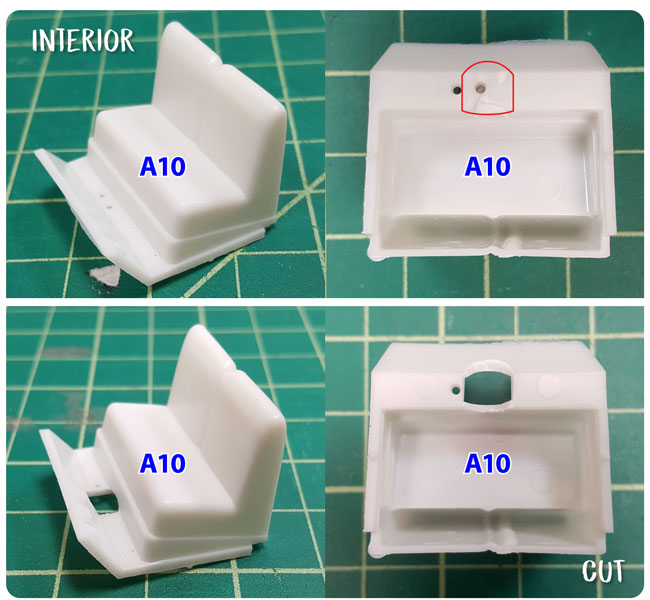
Next I cut a “hole” in interior’s floor (A10) to make room for the drive shaft (R30) from the Super Roadster.
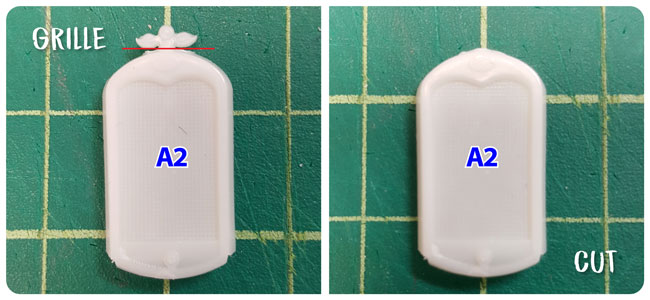
I cut the hood ornament from the grille (A2). I didn’t like it.
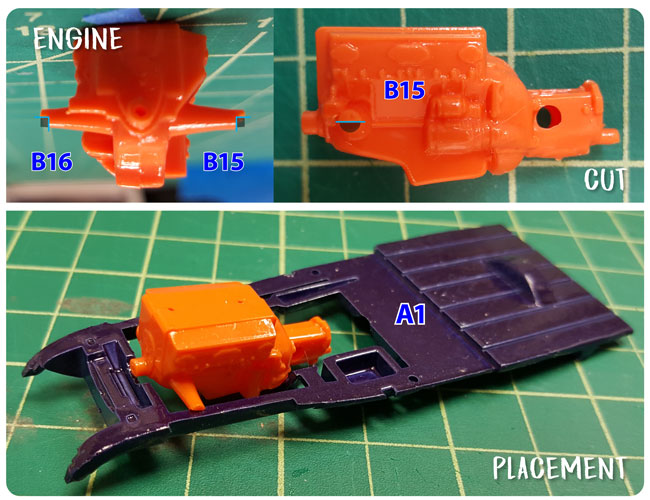
I used the motor halves (B16,B15) from the Lucky Bucket. I cut a half circle from the end of the support rods that enable the engine to sit perfectly in place on the frame (A1) with very little modification. Note I had to cut a half circle notch off the frame at the front of the engine to leave room for the belt (B43). For the motor assembly I used the “Rear Mill Bucket” version, option B on the instructions for the Lucky Bucket, but with different exhaust. I will show this in my next post.
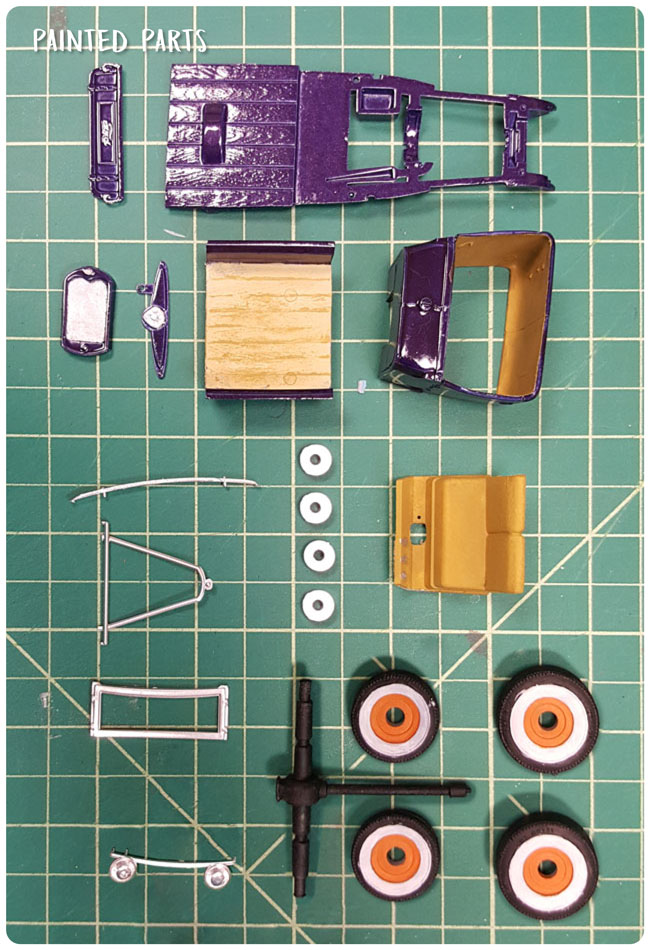
Next I painted the parts as shown above. My paint scheme was inspired by the vintage Lindberg Freaky Ford kit. (as mentioned in Part 1) I painted the frame (A1), body (A3+A4+A5+A6), dash (A17), bed (A7a), grille (A2), and tail gate (A8) a metallic grape purple, first hitting them with a dull medium blue then the purple to give the color a little more depth. I painted the wood planks on the bed to look like wood and the grille and gauges chrome. The interior of the cab and the seats were painted tan. The front radius rod (A12), headlight assembly (A18), bumper (A20), windshield frame (A9) and 4 wheel hubs (R55) were painted chrome. The small front wheels (R27,R28), rear wheels (R32,R33) and drive shaft were painted black. The rims on the wheel were painted orange and whitewalls were added.
Look for my next post for final modifications and assembly.
1:32 Kitbash: 1930 Ford Model A Roadster Pickup – Part 1
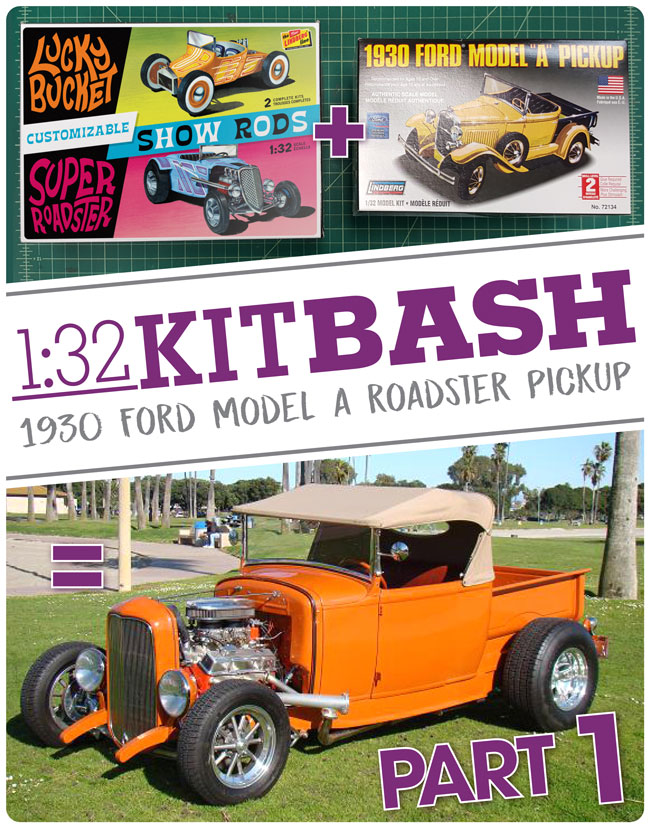
As mentioned in a previous post the Lindberg 1:32 Customizable Show Rod 2-pack will be out soon and one of the cool features is the many parts that can be used to customize the kits – 125 parts to be exact! The kit includes instructions to build the 2 cars in three different ways but with the parts being interchangeable you could customize many more.
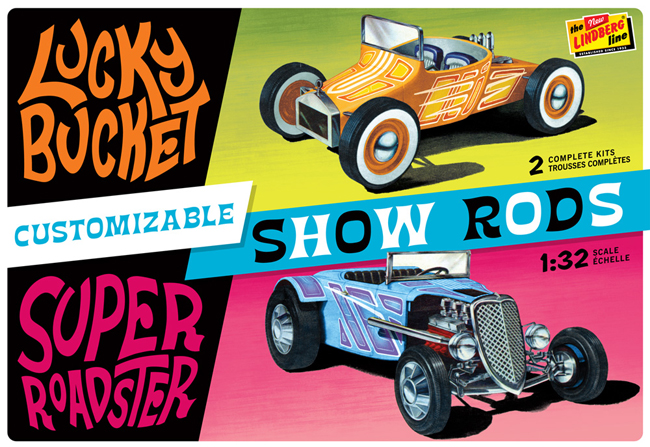
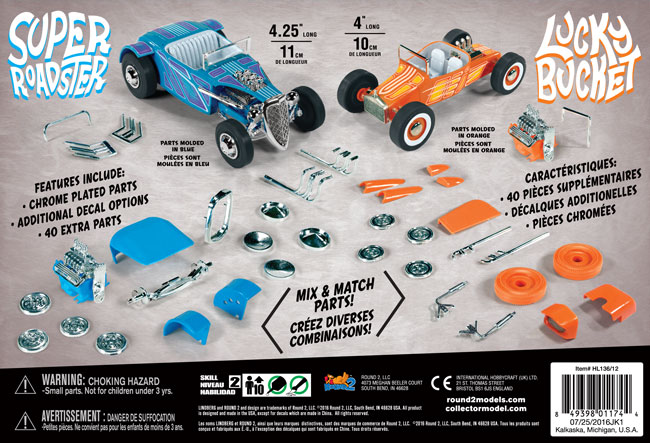
Often not seen in 1:32 car kits are detailed engines and the Show Rod kit includes 2. I realized the Lindberg line has many older 1:32 releases that could be kitbashed with the Show Rods. My goal is to use the parts in the new release to customize the Lindberg 1:32 1930 Ford Model A Pickup, item number 72134. For the paint inspiration I will use the 1975 boxart of Lindberg 1:24 Freaky Ford. Check out my next post to see my progress.
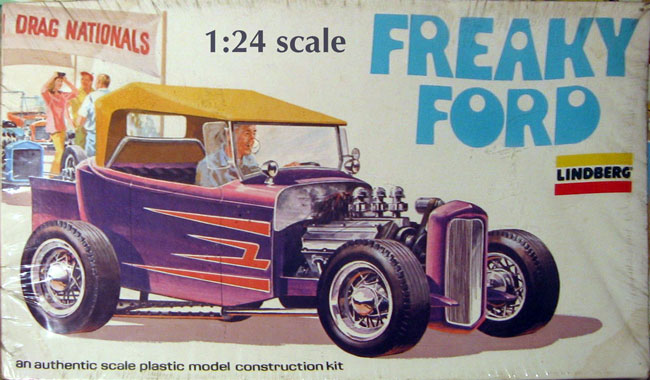
Save
Lindberg Model kits: 1:32 Customizable Show Rods! A Brief History
We have a 2-pack of 1:32 Customizable Show Rods that will be coming out soon under the Lindberg model kit line. The pack includes a 1930s roadster and a 1920s rear-engine bucket that include a slew of interchangeable parts, so you can customize to your heart’s content. These fun little kits were originally released separately in 1965 as part of a series of 4 kits. The Roadster was released as the Super Custom Deuce, a 3-in-1 kit including Street Roadster and B Altered variations, and as the Blown Buggie. The Bucket was released as the Kookie Contender, a 3-in-1 including Scoopster and Rear Mill Bucket variations, and as the Tuned Tinker. Over the next 11 years Lindberg put out 6 more versions of each kit. Notable releases include the hard to find Glo-Karts in ’72, Rainbow Rods in ’73, and the blue jean themed Jumpin’ Jeans in ’75. Because who doesn’t want their hot rod covered in denim?
Now for the FIRST TIME EVER the new release will include chrome parts! The rest of the parts come injected in bright, bold colors. The kits will each include 2-3 options for grilles, headers, carburetors, front suspension, and hubcaps. Additional parts include a soft top, scoops, blowers, tires, front & rear fenders, rear bumper, tail lights, and roll bars. The large decal sheet is all new featuring funky show rod patterns and multiple options for customizing. Given all the options for these kits I am excited to see what modellers will do with them.
Roadster…
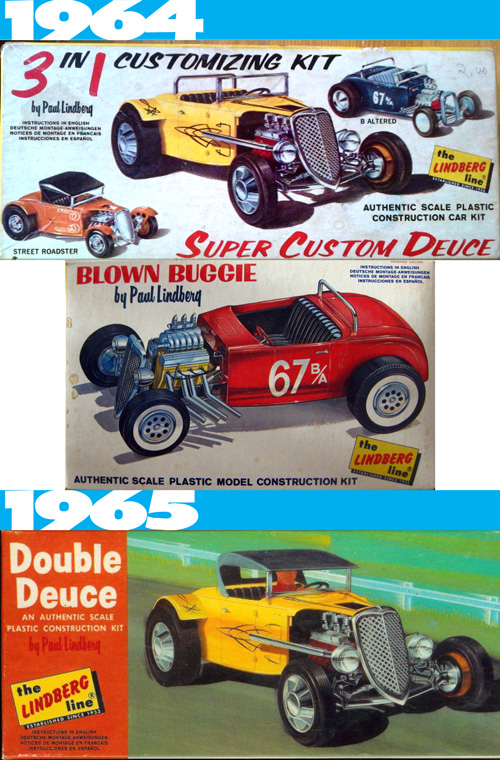
Bucket…
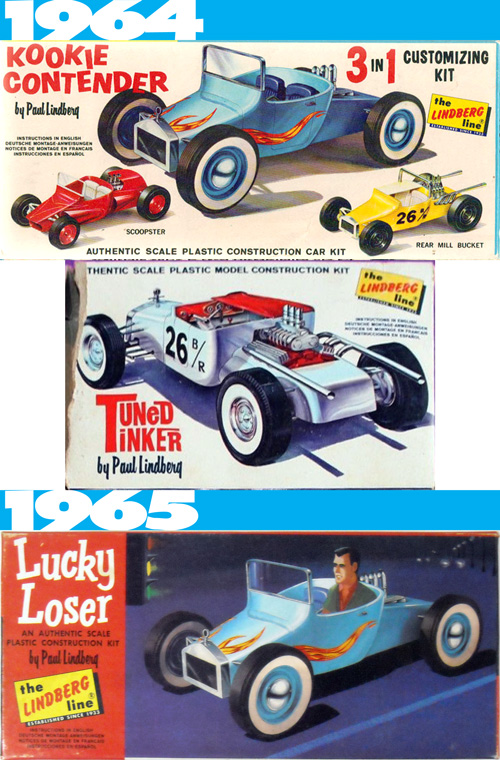
1970s…
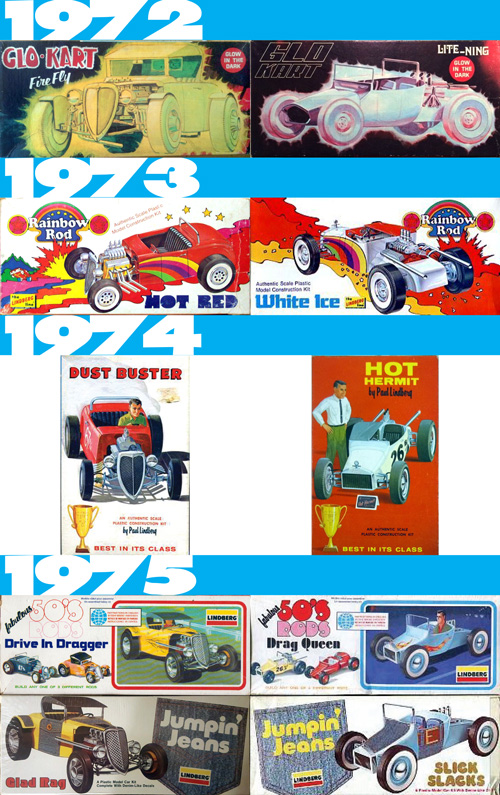
AMT, MPC Cars & Trucks: The Devil Is In The Details
OK, all you car and truck modelers: I’ve been taking some heat, both internally and also from emails coming in. No, not about suicide chicken wings, but regarding our blog and Facebook pages; being “limited” to sci-fi subject matter. I cannot contest this. So, I’m going to try and improve on the situation once and for all, with some posts for those of you who like things that run on gasoline as opposed to dilithium crystals. I commend Jamie to no end for the time and effort he finds and puts into his sci-fi and figural posts. He’s done an incredible job.
